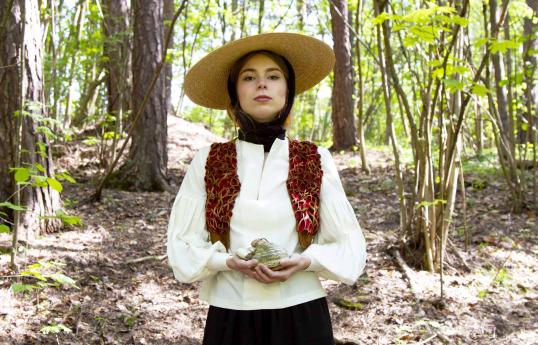Amadou, a unique material derived from the polypore mushroom Fomes fomentarius, is being transformed into a valuable resource for future use thanks to a collaboration between designer and Ph.D. Research Candidate Mari Koppanen and Zoltan Pal in the village of Corund in Eastern Transylvania.
Traditionally used in the village to make small items such as hats and bags, amadou has absorbent, insulating, and anti-inflammatory properties, and is also vegan and free from harmful or plastic-based binding agents or coatings. The material is processed by hand, with the amadou layer carefully separated from the cuticle and spore tubes and then stretched and left to dry. However, the continuity of this craft is threatened by a significant decrease in the number of families involved and the fact that its practitioners are elderly.
Koppanen's collaboration with Pal has not only developed new designs and techniques for using the material but also explored new areas and applications for it, highlighting the natural process of working with the material while creating new innovative ways to use it. The Finnish design industry's expertise in materials, minimalist aesthetics, and environmentally conscious design practices, coupled with Romania's unique craft, has led to a more environmentally and ethically conscious material alternative with a broad range of applications in the textile industry.
According to Koppanen, "Amadou is a material of its own, not only because of its performance qualities but because of its cultural and historical value. Fungal materials are coming more and more into the industry, but in my eyes, amadou is the mother of them all. It has been used for thousands of years for different medical and spiritual purposes. Even Ötzi, the Iceman, carried amadou with him."
This collaboration highlights the importance of preserving traditional crafts and knowledge while promoting innovation and sustainability. In 2022, the project received a WORTH Partnership Project grant from the European Commission. By exploring new applications for amadou, Koppanen and Pal have helped to ensure that this valuable material is not lost to the ages, but rather transformed into a valuable resource for future generations.
Amadou is a material of its own. Not only because of its performance qualities but because of its cultural and historical value. Fungal materials are coming more and more into the industry but in my eyes, amadou is the mother of them all. It has been used for thousands of years for different medical and spiritual purposes. Even Ötzi, the Iceman, carried amadou with him”, says Koppanen.
This project is supported by the WORTH partnership project, funded by the EU Programme for the Competitiveness of Enterprises and Small and Medium-sized Enterprises (COSME)

